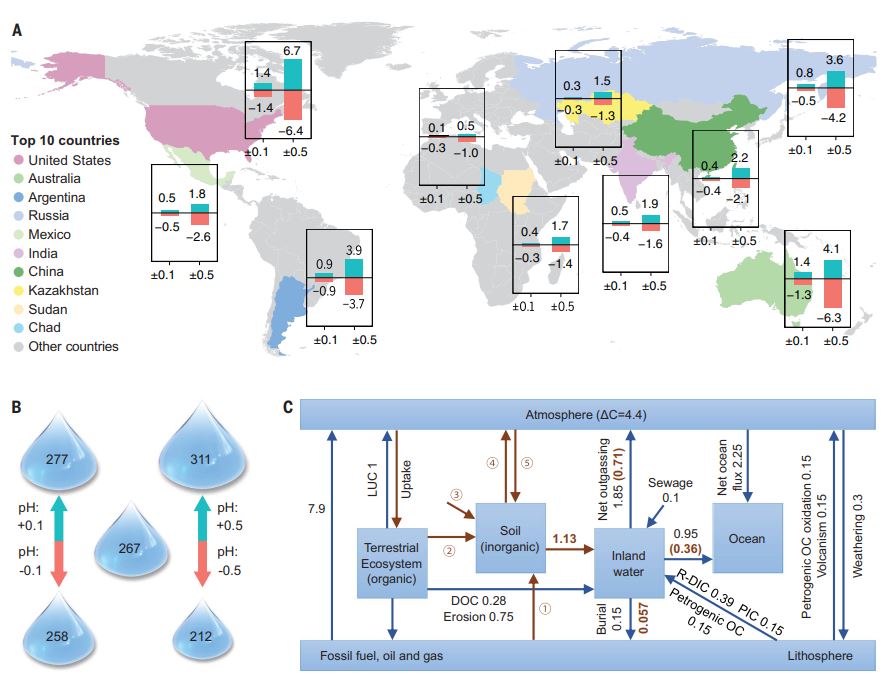April 11, 2024 | Science | Source |
Introduction: Recent evidence challenges the traditional view of soil inorganic carbon (SIC) as stable, revealing rapid dynamics impacting soil health and carbon cycling. For example, SIC influences acidity buffering, nutrient availability, and vice versa. Chinese Academy of Science forms a global research consortium in assessing the quantity, distribution, and vulnerability of the global soil inorganic carbon stock.
Key findings: By analyzing a vast array of field data, the researchers conclude that soils worldwide hold a substantial amount of carbon in the form of SIC, totaling over 2,300 billion tonnes. They highlight the vulnerability of SIC to soil acidification caused by nitrogen inputs, with potential losses posing a risk to carbon sequestration efforts. The study emphasizes the interconnectedness of SIC with atmospheric and hydrospheric carbon dynamics, stressing its overlooked role in shaping climate outcomes. The study underscores the need for a nuanced understanding of SIC dynamics to inform effective carbon management strategies. By considering factors such as soil pH, nitrogen deposition, and land use practices, researchers can better predict and mitigate the impacts of SIC alterations on global carbon budgets.
Figure | SIC-relevant global budgets. (A) Changes in SIC (top 0.3 m) in response to soil pH by countries. Cyan bars (in units of GtC) indicate the gain of SIC in response to a higher pH (by two levels: 0.1 and 0.5), whereas red bars show the loss in response to acidification. We show the top 10 countries rankedby SIC losses (pH reduction by 0.1) from high to low. (B) Global SIC stock (top 0.3 m, in units of GtC) in response to soil pH. (C) Flowchart of the present day global carbon budget (in units of GtC yr−1) accounting for inorganic carbon exchanges through soil. Fluxes that have been altered owing to the inclusion of inorganic carbon through soils are in brown, whereas fluxes in blue arrows are adapted from references. In brackets are the contributions of SIC to total fluxes (in the case of more than one contributing sources). We used Terrestrial Ecosystem to refer to land that excludes inland waters. DOC, dissolved organic carbon export from leaching and runoff; R-DIC, lateral inorganic carbon export from bedrock weathering; PIC, physical erosion of total recalcitrant particulate inorganic carbon; petrogenic OC, organic carbon export from fossil and old soil; erosion, lateral organic carbon export from water, wind, and tillage erosions. Pathway 1 represents the inorganic carbon flux from rock to soil, and its contribution to inland-water is accounted through R-DIC; pathway 2 represents SIC fluxes sourced from terrestrial biological system (e.g., respiration); pathway 3 is external inorganic carbon inputs into soils (e.g., lime); and pathways 4 and 5 are carbon exchanges between SIC and the atmosphere.




